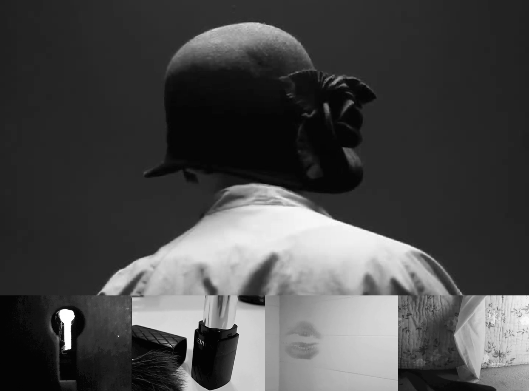Category Archives: Uncategorized
Long
via IFTTT
Dad
via IFTTT
his long goodbye
His long goodbye (Korsakow 2012)
by Georgina Wills, Emily Watt, Cinzia Sammassimo and Sacha Stephan.
His Long Goodbye is my favourite Korsakow film from the students’ work. Even though its genre is experimental but it still has a narrative, a fictional story is partly introduced to audience through a undefined voice over and a series of slides that loop around irrelevant brief fragments that somehow supports and interact with the sound. On the sound track, I hear anonymous voice of a man telling the story of his death in a nonlinear order.
In the film, non logical connection groups of moving images are showed, from the city, doors, windows, outside, day, night and empty space. However in each group, a pattern is used to connect the images with similarity. For example, in figure 1, a pattern of repetition about the image of tree is used to connect the four interfaces together.
Figure 1
The pattern of repetition is used throughout the film to connect everything together and hold irrelevant subjects in the film as a whole. The filmmaker also uses black and white, which also creates a pattern of familiarity for the film.
His Long Goodbye is a clear example of associational form in experimental genre. The film is built out of shots of widely different things: cityscape, windows, lights, trees and empty spaces. The juxtaposition has no narrative connection but the continuous sound track help to create a fictional nonlinear narrative for the film. However, the shots evoke the idea of impersonal, sameness and longing memories that in a way support the story I hear from the voice over. It almost feels like the man is looking through his memories of his time with the woman one last time before he dies as the spaces in the shots orderly go emptier and emptier.
The interface is set up very clever that it connect all the non-connective shots together. Shots of the back of a figure, a lock, and lipstick mark…give me a sense of mystery and secret (fig.2). Then shots of a door, a hand and a lock again appear like the secret is unfolding (fig.3). My favorite sequence in the film is the one with shots of flowers dying (fig.4) . The interface leads my to the end of the story, the death. Not one shot but 4 shots of dying flowers are put on the interface which to me represent 4 times the bullets hit the man in story. They show delay, it makes me as the audience feels like the man is trying to prolong his death, trying to recall best moments of his life before he actually stops living. The fact that I can interact with the interface and choose my direction to unfold the film makes me feel very interesting, as it’s different every time I watch it. Sometimes, my direct of choosing interface makes it seems like I can actually prolong his death and open up more of his memories and secrets.
Figure 2
Figure 3
His Long Goodbye is a good example of a associational experimental film which the images and sound are juxtaposed prods us to look for some connect, the association that binds them together. The film also shows how a continuous sound track can drive connection amongst everything else. . In a way, I find it really abstract, as sometimes, it’s quite hard to understand the connection between the interfaces and link it with the voice over to create my own meaning of the film.
Shoot to edit
We shoot to edit because it’s less stressful that editing in camera as we don’t have to get the shots right the first time. With shooting to edit, scenes can be shot out of order as it’s more efficient to shoot all one actor’s lines or one location on a single day. Shooting to edit also give more options for postproduction as a numerous takes with variety of angles is available to choose.
Sound and Image
‘A sound must never come to the rescue of an image, nor an image to the rescue of a sound”
“If a sound is the obligatory complement of an image, give preponderance either to the sound, or to the image. If equal, they damage or kill each other, as we say of colours”
-Notes on the cinematographer” from Bresson, R.
It’s such an interesting thing to learn as I always think sound and image are both important equally in every screen.
Blended
via IFTTT
Paper
via IFTTT
Cars
via IFTTT
Take it slow
via IFTTT





